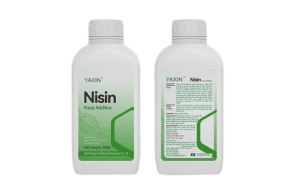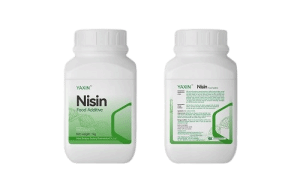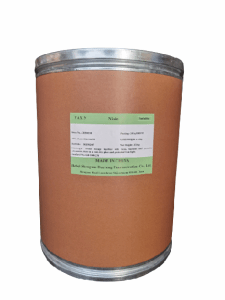
 CONTACT
CONTACT
- Linkman:Linda Yao
- Tel: +8618231198596
- Email:linda.yao@dcpharma.cn
- Linkman:CHARLES.WANG
- Department:Overseas
- Tel: 0086 0311-85537378 0086 0311-85539701
ε-Polylysine Hydrochloride in Food Packaging Preservation
TIME:2025-02-07ε-Polylysine Hydrochloride is widely used in food packaging preservation technology due to its excellent antibacterial properties. Below is an overview of the specific techniques and mechanisms involved:
Ⅰ.Direct Addition to Packaging Materials
1. Mechanism of Action
ε-Polylysine Hydrochloride is uniformly incorporated into raw materials such as plastics and paper used for food packaging. During the material formation process, it is evenly distributed within the packaging material. During food packaging and storage, ε-Polylysine Hydrochloride gradually migrates to the material’s surface, where it comes into contact with microorganisms on the food surface or in the packaging space. It inhibits the growth and reproduction of bacteria, molds, and yeasts by disrupting microbial cell membranes and interfering with cellular metabolism, thereby extending the shelf life of food.
2. Application Examples
·Adding ε-Polylysine Hydrochloride to plastic packaging for fresh meat, fish, and other perishable foods can significantly reduce microbial growth, helping to maintain food color, odor, and texture while extending shelf life.
·Incorporating it into paper packaging for pastries and baked goods effectively prevents mold growth, preserving the taste and quality of food.
Ⅱ.Antibacterial Coating on Packaging Materials
1. Mechanism of Action
Antibacterial coatings containing ε-Polylysine Hydrochloride can be applied to packaging materials through coating, spraying, or dipping methods. This coating forms a thin antibacterial film, which acts as both a physical barrier to block external microbial invasion and an active antibacterial agent that kills or inhibits microbes that come into contact with the coated surface, thus preserving food freshness.
2. Application Examples
·Applying ε-Polylysine Hydrochloride coatings on plastic films for fruits and vegetables helps suppress microbial growth on the food surface, reduce moisture loss, and slow down ripening and spoilage.
·Coating the inner walls of metal cans with an antibacterial layer prevents microbial growth inside, making it especially suitable for packaging acidic or high-salt foods, which are more prone to microbial contamination.
Ⅲ.Synergistic Effects with Other Preservation Technologies
1. Combination with Modified Atmosphere Packaging (MAP)
·Mechanism of Action
Modified Atmosphere Packaging (MAP) works by altering the gas composition inside the packaging, such as reducing oxygen levels and increasing carbon dioxide concentrations, to create an environment that inhibits microbial growth. Meanwhile, ε-Polylysine Hydrochloride directly suppresses microorganisms, and the combination of both approaches synergistically inhibits microbial growth, slows oxidation reactions, and better preserves food quality.
·Application Examples
When packaging fresh strawberries, blueberries, and other berries, combining MAP with ε-Polylysine Hydrochloride-containing packaging materials can significantly extend freshness, preserving the color, texture, and nutritional value of the fruit.
2. Combination with Nanotechnology
·Mechanism of Action
Using nanotechnology, ε-Polylysine Hydrochloride can be processed into nanoparticles or loaded onto nanocarriers, increasing its surface area and bioactivity, thus enhancing its antibacterial effectiveness. The nano-sized ε-Polylysine Hydrochloride can penetrate microbial cell walls and membranes more effectively, interacting with intracellular biomolecules to achieve stronger antimicrobial action.
·Application Examples
·Adding ε-Polylysine Hydrochloride nanoparticles into packaging materials for meat and dairy products effectively inhibits spoilage bacteria and pathogens, extending shelf life.
·Additionally, nanotechnology improves the mechanical and barrier properties of the packaging material, enhancing durability and protection.
Ⅳ.Controlled-Release Preservative for Packaging
1. Mechanism of Action
ε-Polylysine Hydrochloride can be combined with controlled-release materials to develop slow-release preservatives. When placed inside food packaging, the preservative gradually releases antibacterial agents over time in response to humidity, temperature, or other environmental factors. This maintains an effective antimicrobial concentration inside the packaging over an extended period, achieving long-term preservation and freshness.
2. Application Examples
ε-Polylysine Hydrochloride can be combined with sodium alginate, chitosan, or other natural biopolymers to create slow-release preservatives for fresh flowers, herbal medicines, and other delicate products, effectively preventing microbial contamination while preserving quality and bioactivity.
- Tel:+8618231198596
- Whatsapp:18231198596
- Chat With Skype







